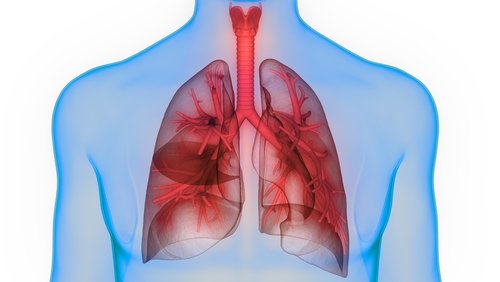Study Identifies Predictors of Poor Outcome in Patients with SSc at Risk for Pulmonary Hypertension

A study identified predictors for hospitalization due to lung and heart problems and mortality in systemic sclerosis (SSc) patients at risk for pulmonary hypertension (PH).
Being a man, having a reduced capacity to clear carbon monoxide in the lungs, and having pericardial effusions (accumulation of fluids around the heart) were among the predictors found.
The results were described in the article “Risk Factors for Mortality and Cardiopulmonary Hospitalization in Systemic Sclerosis Patients At Risk for Pulmonary Hypertension, in the PHAROS Registry,” published in the Journal of Rheumatology.
SSc patients may develop several types of lung disease. In fact, pulmonary arterial hypertension (PAH) and interstitial lung disease (ILD) are the leading causes of death among SSc patients.
In order to better understand disease progression and mortality among SSc patients at risk of PH, researchers analyzed data from the Pulmonary Hypertension Assessment and Recognition of Outcomes in Scleroderma registry (PHAROS, NCT00377949). The multicenter study assesses SSc patients in the United States who are at high risk of developing PH, as well as those with newly diagnosed PH.
Medical records from 236 patients at risk for PH were analyzed. Of these, 35 patients developed PH.
Results showed that being a man increased the risk of overall mortality 4.72 times.
Having low %DLCO (reduced capacity to clear carbon monoxide in the lungs; a measure of lung function) and exercise oxygen desaturation (a drop in the blood’s oxygen level during exercise) also increased the mortality risk 2.07 and 5.39 times, respectively, in SSc patients at risk for PH.
Anemia and pericardial effusion were associated with a 3.76 and 5.32 times increased risk of death, respectively.
The risk of hospitalization due to lung and heart problems was found to be associated with an increase in dyspnea (shortness of breath) and pericardial effusions, although PH patients with a DLCO score of less than 50% had the highest risk of hospitalization.
Results also showed that SSc patients at risk for PH had similar risk factors of poorer outcomes as those already diagnosed with PH or PAH.
“Risk factors for worse outcome in those patients with SSc at risk for PH were similar to others with confirmed SSc-PH and SSc-PAH. Male sex, %DLCO less than 50%, exercise oxygen desaturation, and the presence of pericardial effusions in those at risk for PH were independently associated with higher mortality,” the team concluded.
According to the team, “patients with these risk factors should undergo RHC [right heart catheterization] and receive appropriate intervention if PH is confirmed.” RHC can provide a definite diagnosis of PH.






